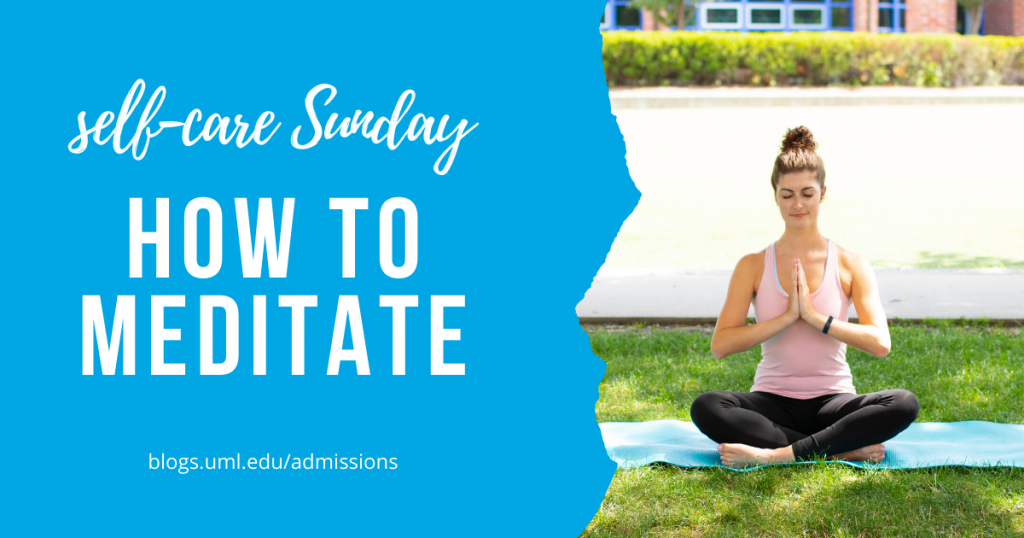We’re all about taking a few minutes to center our minds and start the new week full of positive vibes. Today, we’ll go over some tips and tricks for meditating on your own.

The good thing about meditation is that you can do it from the comfort of your own home (it works out since we’re all stuck at home right now and campus is closed). Anyone can meditate, and you only need a few minutes a day to benefit.
Don’t get caught up in the little things
You don’t need to spend money on special chairs, seating cushions, clothes or accessories. Unless you want to—by all means, treat yourself. You also don’t need to focus on holding a particular posture or sit facing the rising sun, or whatever (go for it if that’s your thing, though).
All you really need to meditate is a quiet place that you feel comfortable in.
Find a place to sit and get started. You can meditate any time during the day that works best for you.
Did you miss Self-Care Sunday last time? Catch up here.
1. Start small the first time you meditate
Set aside two minutes. For real, that’s all you need. After a week of meditating for two minutes, you can increase the length of time to four or five minutes. Honestly, there aren’t any set-in-stone rules for how long you should meditate, but it’s best in the beginning to start with short sessions.
2. How are you feeling?
As you start meditating, close your eyes and take stock of how you feel. What’s your mental state? How does your body physically feel?
3. Focus on your breathing
As you start to get in the zone, pay attention to the rise and fall of your chest and your breathing rhythm. Focus on each inhale, follow it as it fills your lungs and exhale. Try to keep your breathing natural.
4. Don’t worry if your thoughts wander
It will happen, but don’t worry. When your thoughts wander, make a mental note and focus back on your breathing.
Any stray thoughts or feelings that arise are nothing to be ashamed of or feel frustrated about. Be kind to yourself and recognize and accept that the things you feel are legitimate and it’s ok to feel a certain way. Especially with everything that’s been going on these past few months.
*Having stray thoughts during meditation doesn’t mean you’re doing it wrong. There’s no right or wrong way to meditate. Even though you start meditation by focusing on your breathing, it’s not about 100% clearing your mind. It’s more like a mental space where you acknowledge your feelings and the patterns your thoughts take.
5. End your meditation session
You don’t have to do anything special to finish meditating once the time is up. As you go about your day, try to remember the quiet and calm you experienced while you meditated.
That’s basically all there is to it. The more you practice, the easier it will be and the more of a lasting impact it’ll have on your wellbeing. Once campus re-opens, you’ll be able to see firsthand some of the events and services we offer to help our students. Fun fact: The UML Office of Student Affairs offers weekly Mindfulness Meditation and Loving-Kindness Meditation sessions.
